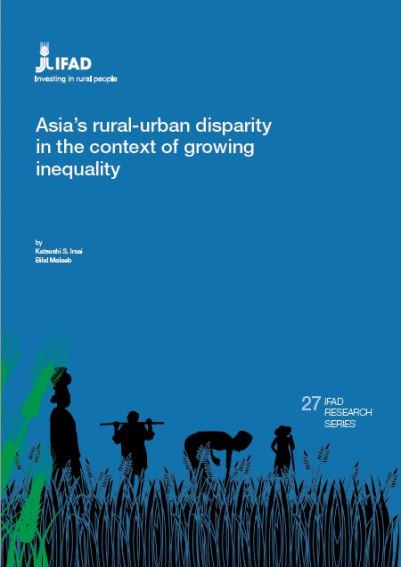Asia’s rural-urban disparity in the context of growing inequality
 This study offers empirical evidence on the rural-urban gap in the context of growing inequality in Asia. First, China and India explain the trends in regional inequality given their large populations, signifying their importance as major contributors. Overall, China’s income inequality is characterized by rural-urban disparity, but the inequality within rural and within urban areas has worsened, although the country has experienced very high economic growth. India is mainly characterized by high inequality within urban areas, despite a sharp reduction in urban poverty. India’s rural-urban income gap has narrowed in recent years. Also find
that the rural-urban income gap has narrowed in many other countries, such as Thailand and Viet Nam. Second, econometric results on the agricultural and non-agricultural income gap suggest that a higher non-agricultural growth rate tends to widen the rural-urban gap over time, while agricultural growth is unrelated to the rural-urban gap. Third, the rural-urban human resources gap in terms of educational attainment has increased in both China and India. Policies that promote agricultural growth and rural education are deemed important not only for reducing rural poverty but also for narrowing the rural-urban human resources gap.
This study offers empirical evidence on the rural-urban gap in the context of growing inequality in Asia. First, China and India explain the trends in regional inequality given their large populations, signifying their importance as major contributors. Overall, China’s income inequality is characterized by rural-urban disparity, but the inequality within rural and within urban areas has worsened, although the country has experienced very high economic growth. India is mainly characterized by high inequality within urban areas, despite a sharp reduction in urban poverty. India’s rural-urban income gap has narrowed in recent years. Also find
that the rural-urban income gap has narrowed in many other countries, such as Thailand and Viet Nam. Second, econometric results on the agricultural and non-agricultural income gap suggest that a higher non-agricultural growth rate tends to widen the rural-urban gap over time, while agricultural growth is unrelated to the rural-urban gap. Third, the rural-urban human resources gap in terms of educational attainment has increased in both China and India. Policies that promote agricultural growth and rural education are deemed important not only for reducing rural poverty but also for narrowing the rural-urban human resources gap.
